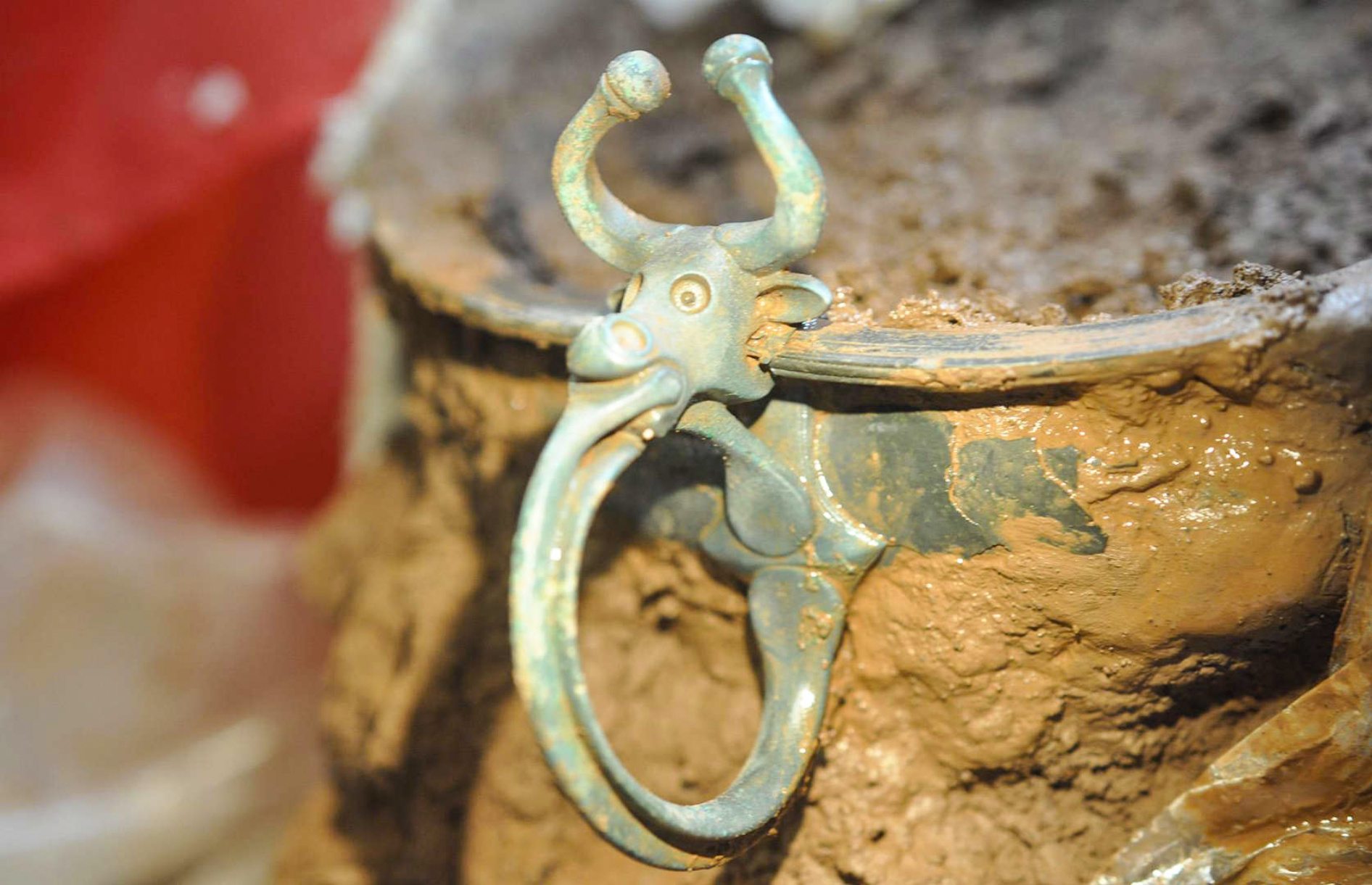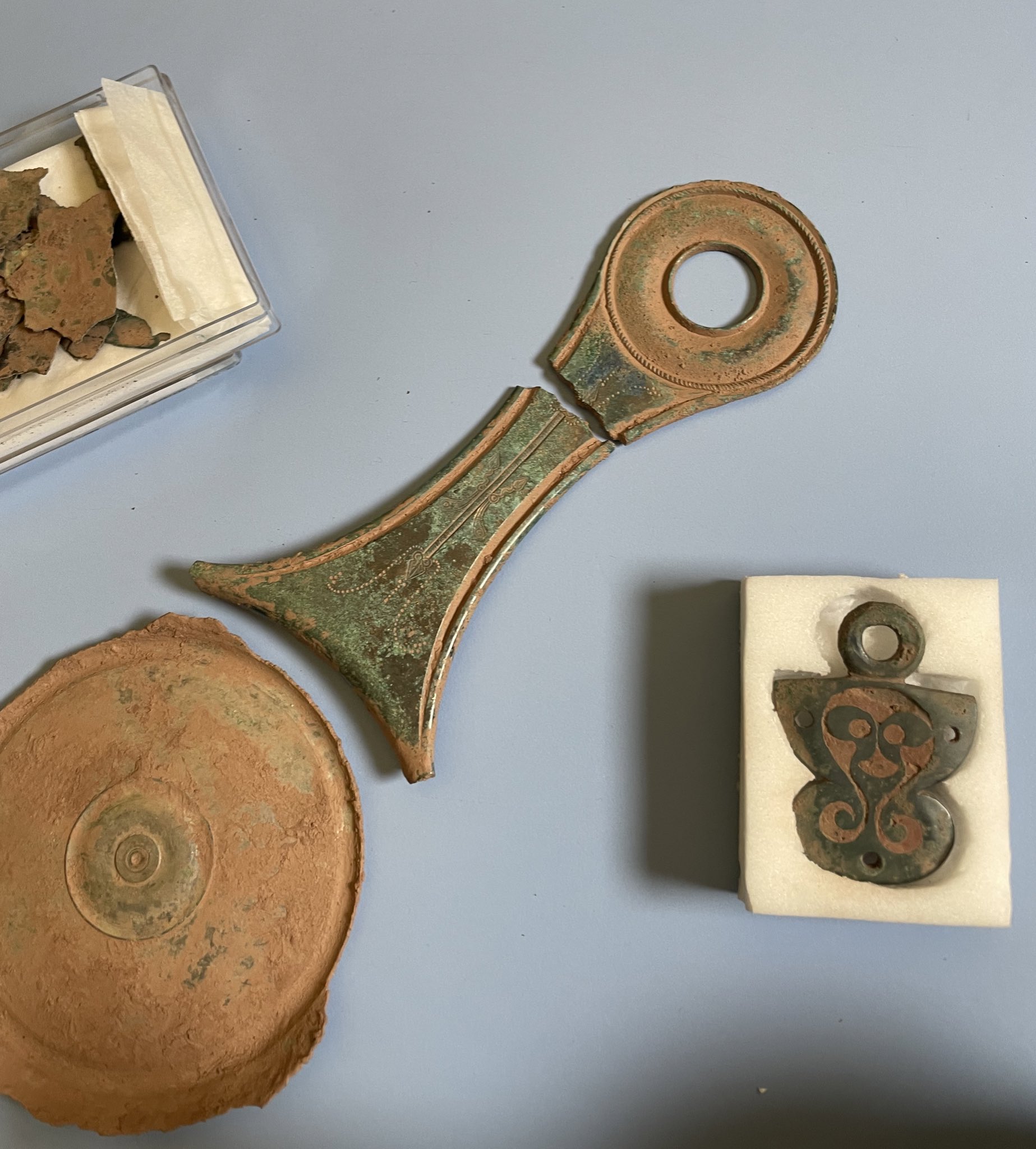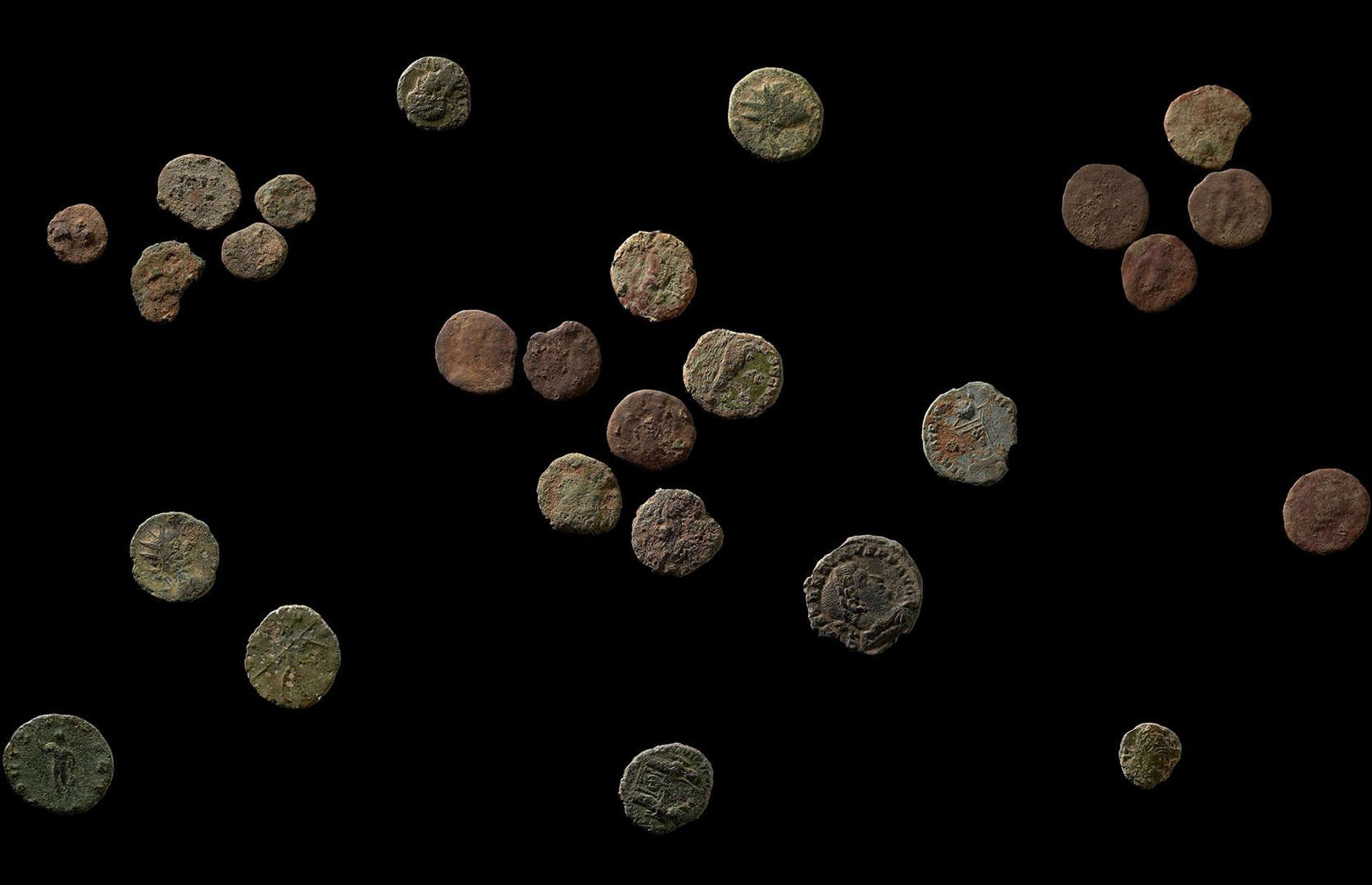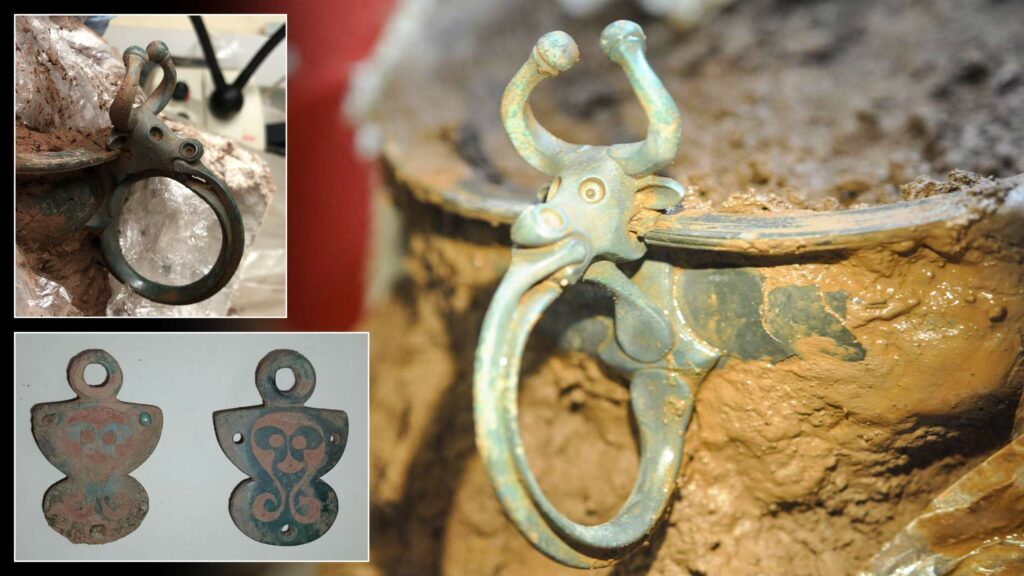A metallic detectorist discovered a pile of exceptionally preserved Roman and Iron Age objects buried 2,000 years in the past in a subject in Monmouthshire, a county in southeast Wales.

Metallic detectorist Jon Matthews found the objects, which date again 1000’s of years, in a subject in Llantrisant Fawr in 2019. The Roman finds, now formally declared a treasure, might recommend a beforehand undiscovered settlement within the space, in keeping with consultants.
These finds embrace a Roman pot and a Celtic bucket mount, which initially emerged as a bloc assortment of buried treasures. In response to the press launch, archaeologists decided that the two,000-year-old artifacts had been Iron Age and early Roman pottery vessels. From the sphere, eight artifacts, together with two entire items, had been discovered.


The artifacts had been possible buried collectively “across the time of the Roman conquest, within the second half of the primary century AD,” the discharge stated. Among the many finds was an enchanting bowl embellished with an ox face, as seen in one of many pictures. A large-eyed ox with bowed horns is depicted on the blue-green metallic design. He stands out his decrease lip or jaw into the handle-like loop.
“I’ve by no means seen something prefer it. I didn’t assume our ancestors might make such a wonderful, lovely factor. I used to be fairly shocked. I really feel honored to have discovered one thing so distinctive that’s linked to Wales and our ancestors,” Matthews informed Wales On-line.


The excavation staff nicknamed the ox “Bovril,” stated Adelle Bricking, an archaeologist who labored on the excavation. Bricking stated. “Think about our shock once we flicked off the mud and uncovered Bovril’s lovable little face!!!” she wrote.
The following investigations carried out by consultants from the Transportable Antiquities Scheme in Wales (PAS Cymru) and Amgueddfa Cymru uncovered a complete of two full and 6 fragmentary vessels. Among the many findings had been remnants of two wood tankards, an Iron Age bucket adorned with copper alloy fittings, an Iron Age copper alloy bowl, cauldron, and strainer, in addition to two Roman copper alloy saucepans.
“I really feel honored to have discovered one thing so distinctive that’s linked to Wales and our ancestors,” Matthews stated.
Alastair Willis, a senior curator at Amgueddfa Cymru, stated, “The invention of two coin hoards in the identical subject and within the basic neighborhood of the Roman city at Caerwent, is thrilling and vital. The outcomes of the geophysical survey undertaken recommend the presence of a beforehand unknown settlement or spiritual website the place the coin hoards had been buried. This sheds mild on life within the rural hinterland across the Roman city of Venta Silurum. The discoveries are additionally essential for understanding occasions occurring in south-east Wales across the time when the Romans left, at first of the fifth century AD.”



